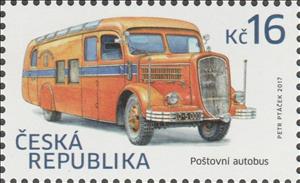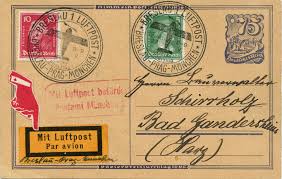Stamp: Historical Vehicles: Post bus (Czech Republic 2017)
Historical Vehicles: Post bus (Czech Republic 2017)
15 February (Czech Republic ) within release Historical Vehicles goes into circulation Stamp Historical Vehicles: Post bus face value 16 Czech koruna
| Stamp Historical Vehicles: Post bus in catalogues | |
|---|---|
| Michel: | Mi: CZ 914 |
| POFIS: | POF: CZ 916 |
Stamp is horizontal format.
Also in the issue Historical Vehicles :
- Stamp - Historical Vehicles - Postbus face value 16;
- Stamp - Historical Vehicles - Railroad Mail Car face value 16;
- Stamp - Historical Vehicles: Railroad mail car face value 16;
- Stamp - Historical Vehicles: Post bus face value 16;
Stamp Historical Vehicles: Post bus it reflects the thematic directions:
A car is a wheeled, self-powered motor vehicle used for transportation and a product of the automotive industry. Most definitions of the term specify that cars are designed to run primarily on roads, to have seating for one to eight people, to typically have four wheels with tyres, and to be constructed principally for the transport of people rather than goods. The year 1886 is regarded as the birth year of the modern car. In that year, German inventor Karl Benz built the Benz Patent-Motorwagen. Cars did not become widely available until the early 20th century. One of the first cars that was accessible to the masses was the 1908 Model T, an American car manufactured by the Ford Motor Company. Cars were rapidly adopted in the United States of America, where they replaced animal-drawn carriages and carts, but took much longer to be accepted in Western Europe and other parts of the world.
Postal history is the study of postal systems and how they operate and, or, the study of the use of postage stamps and covers and associated postal artifacts illustrating historical episodes in the development of postal systems. The term is attributed to Robson Lowe, a professional philatelist, stamp dealer and stamp auctioneer, who made the first organised study of the subject in the 1930s and described philatelists as "students of science", but postal historians as "students of humanity". More precisely, philatelists describe postal history as the study of rates, routes, markings, and means (of transport).
The mail or post is a system for physically transporting documents and other small packages; or, the postcards, letters, and parcels themselves. A postal service can be private or public, though many governments place restrictions on private systems. Since the mid-19th century national postal systems have generally been established as government monopolies with a fee on the article prepaid. Proof of payment is often in the form of adhesive postage stamps, but postage meters are also used for bulk mailing. Modern private postal systems are typically distinguished from national postal agencies by the names "courier" or "delivery service". Postal authorities often have functions other than transporting letters. In some countries, a postal, telegraph and telephone (PTT) service oversees the postal system, in addition to telephone and telegraph systems. Some countries' postal systems allow for savings accounts and handle applications for passports.



